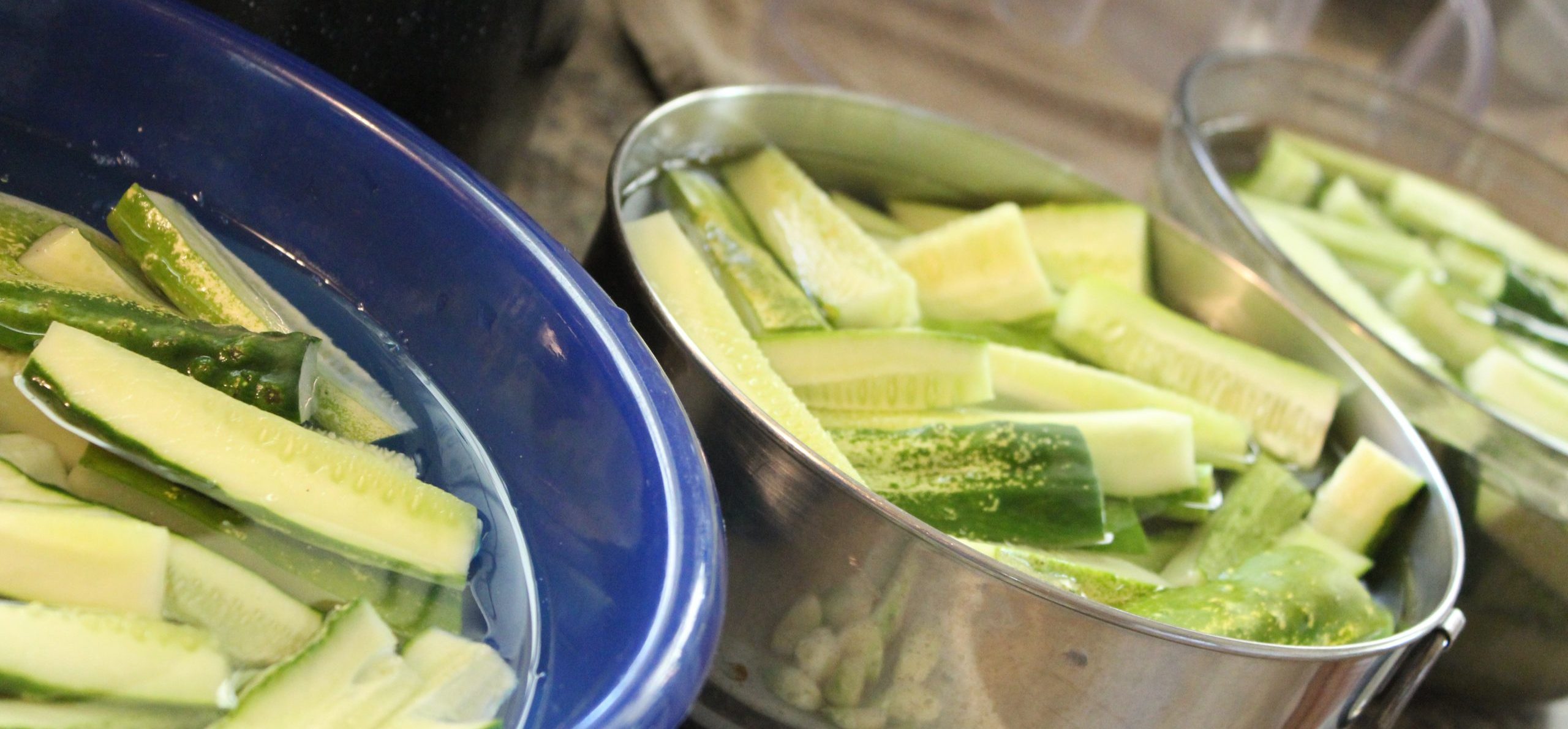Canning pickles at home is easy, cost-effective, and delicious. Follow these very direct instructions for a safe and classic dill pickle using the trusted Ball Blue Book brine recipe.
🥒 Ingredients (Makes about 6–7 pints)
-
4 lbs of 3–4 inch pickling cucumbers (washed and ends trimmed)
-
3 ½ cups distilled white vinegar (5% acidity)
-
3 ½ cups water
-
¼ cup canning or pickling salt
-
1–2 cloves garlic per jar (optional)
-
1 head of fresh dill or 1 tsp dill seed per jar
🧂 Brine Recipe (Ball Blue Book Standard)
This is the classic 1:1 ratio:
-
3 ½ cups vinegar
-
3 ½ cups water
-
¼ cup pickling salt
Bring this to a boil, then keep it hot while packing jars.
🫙 Equipment Needed
-
Canning jars (pint or quart)
-
New lids and clean rings
-
Water bath canner with rack
-
Jar lifter and funnel
-
Clean towels
-
Large pot for brine
Step 1: Prep Jars and Lids
-
Wash jars in hot soapy water. Rinse well.
-
Keep jars hot in simmering water until ready to use.
-
Place lids in hot (not boiling) water to soften the seal.
Step 2: Wash and Trim Cucumbers
-
Scrub well under cold water.
-
Trim 1/8 inch from the blossom end (this helps keep them crisp).
Step 3: Make the Brine
-
Combine 3 ½ cups vinegar, 3 ½ cups water, and ¼ cup pickling salt.
-
Bring to a boil, stir to dissolve salt completely.
-
Keep simmering while you pack the jars.
Step 4: Pack the Jars
-
Into each hot jar, place:
-
1 tsp dill seed or 1 head of dill
-
1–2 garlic cloves (optional)
-
-
Tightly pack cucumbers into jars, standing upright if possible.
Step 5: Add Brine
-
Using a funnel, pour hot brine into each jar, leaving ½ inch headspace.
Step 6: Remove Air Bubbles
-
Slide a non-metallic utensil (like a bubble remover) around the inside edge.
-
Add more brine if needed to maintain ½ inch headspace.
Step 7: Wipe and Seal
-
Wipe jar rims with a clean damp cloth.
-
Center lid on the jar, screw on band to fingertip-tight.
Step 8: Process in Water Bath
-
Place jars in canner with 1–2 inches of water covering the lids.
-
Bring to a boil.
-
Process for 10 minutes for pints, 15 minutes for quarts.
-
(Adjust for altitude if needed.)
Step 9: Remove and Cool
-
Turn off heat. Let jars sit in water 5 minutes.
-
Remove jars with lifter. Place on towel-lined surface.
-
Let sit undisturbed for 12–24 hours.
Step 10: Check Seals
-
Press lid centers. If they don’t pop, they’re sealed.
-
Label and store sealed jars in cool, dark place.
🧊 Let Them Cure
Let pickles sit for 2–4 weeks before eating for best flavor.
💡 Tips
-
For extra crunch: soak cucumbers in ice water for 2–3 hours before canning.
-
Use pickling cucumbers, not slicing cucumbers—they stay firmer.
-
Never reuse lids for canning (only for storage).
What If You’re Canning Cucumber Relish?
Cucumber relish is another tasty way to preserve cucumbers, but the process is slightly different from canning whole pickles. Here’s what you need to know:
🔄 Key Differences in the Method for Cucumber Relish
-
Chop Instead of Pack Whole
-
Cucumbers (and other vegetables like onions and peppers, if using) are finely chopped, not packed whole.
-
Use a food processor for speed and consistency.
-
-
Salt and Drain Before Cooking
-
Mix chopped veggies with canning salt and let sit for several hours (often 2–4 hours or overnight).
-
Drain thoroughly and press out excess moisture. This prevents a watery relish.
-
-
Cook the Mixture Before Canning
-
Combine drained veggies with vinegar, sugar, and spices in a large pot.
-
Bring to a boil and simmer for about 10–15 minutes to blend flavors.
-
-
Use a Different Brine
-
Cucumber relish typically includes vinegar, sugar, mustard seed, celery seed, turmeric, and sometimes cornstarch for thickening.
-
Follow a trusted tested recipe for proportions (such as Ball Blue Book’s Sweet Cucumber Relish or Garden Relish).
-
-
Leave ½ Inch Headspace
-
Same headspace rule applies: ½ inch.
-
-
Processing Time
-
Water bath process pint jars for 10 minutes (adjust for altitude).
-
Most relish recipes do not require quart-size processing.
-
-
Consistency Check
-
Relish should be thick but spoonable. Stir well before ladling into jars.
-
✅ Final Note:
Always use tested recipes for relish (Ball, USDA, or extension office recipes), because relish has less acidity than straight vinegar brines, and exact ratios matter for food safety.
Whether you’re putting up dill pickles or crafting sweet cucumber relish, you’re building a pantry full of flavor and self-reliance. Happy canning!
You can get a copy of the Ball Book of Home Preserving at Amazon (this is an affiliate link)
Amazon Affiliate Disclosure
Some of the links on Stone Pathway are Amazon affiliate links. This means that if you click on a link and make a purchase, I may earn a small commission at no additional cost to you. Your support helps me to continue providing valuable content and maintaining the blog.
I only recommend products and services that I genuinely believe will be useful and relevant to my readers. The opinions expressed here are my own and not influenced by any affiliate relationships.
Thank you for supporting Stone Pathway!
